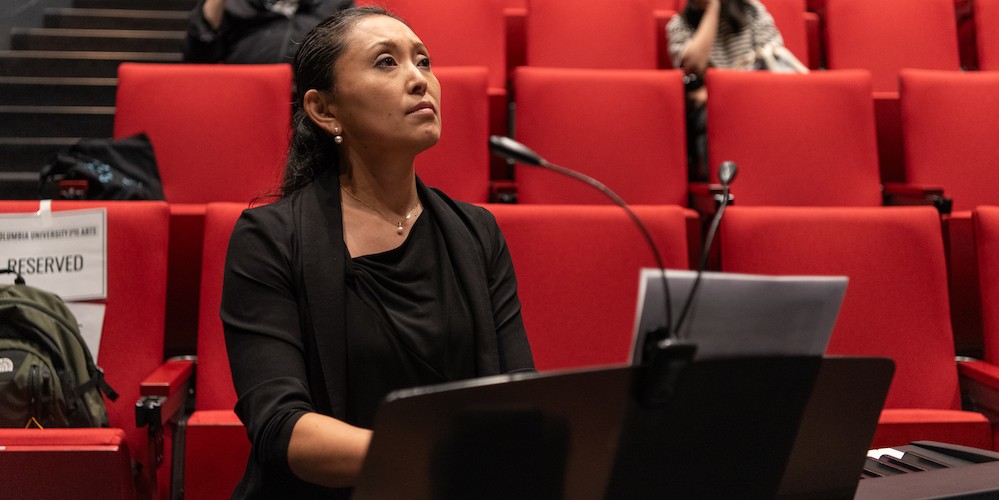‘Toy Film’ Restores Lost History, Reveals Shadows of the Showa Period
A shrine of white stone ringed by thin-leafed trees. A smoking battleship, a mass of crushed rubble. A soldier lifting a sandbag. A stretch of shoreline, a child wearing a ribboned straw hat.
These were some of the images screened for the audience during “A ‘Toy Film’ History of Shōwa: The Second Sino-Japanese War, 1931–1945,” presented at the Lenfest Center for the Arts on September 17, 2023.
A compilation of rare footage in a range of small film gauges, Toy Film was directed and edited by Yoneo Ota, curator of the Toy Film Museum in Kyoto, Japan. The documentary drew entirely from the museum’s collection, spanning dramatic features, wartime animation, and fragments of newsreels and documentaries. The collection also includes footage of the Shōwa Emperor’s enthronement; the Manchurian Incident; records of the day after the Great Kantō Earthquake; and propaganda made for children as Japan moved toward war.
Silent film composer Makia Matsumura provided piano accompaniment for the production, while Joanne Bernardi (GSAS ’92)—alumna of Columbia University’s PhD program in East Asian Languages and Cultures—translated Ota's remarks.

During her opening remarks, Film and Media Studies Professor Jane M. Gaines described the “complete and total novelty” of Ota’s work, noting his engagement in the restoration and digitization of more than 800 films. With the support of a wide net of collaborators, Ota navigated preservation issues such as mechanical damage and decay. Now, these thirty-second to three-minute-long film fragments comprise some of the only relics of Japanese films prior to World War II.
“[Toy Film] is important in motion picture history as documentation of the fact that popular film viewing in Japan was a specific cultural phenomenon unlike any other in the world,” Gaines said.
Prior to the screening, Gaines and Ota made note that the presentation featured, essentially, militaristic material depicting and referring to events during the invasion and occupation of China—all of it from a Japanese perspective. Toy Film frequently included intertitles, translated by Bernardi, which provided historical contextualization for this propaganda as well as informational details pertaining to the escalation of tension among global powers.
During a Q&A portion, several audience members referred to the “gaps” in the stories and voices shown in the screening. Ota explained that while he regularly receives donations of toy films at the Toy Film Museum, he unfortunately has not come across any footage representative of varied perspectives. Still, Ota believes that modern audiences have much to learn even from the limited perspectives represented in this found footage.
“Even with this limited amount of surviving footage, we can comprehend a fragment of the Second Sino-Japanese War,” read one of the intertitles. “As we watch these images, at this point even if we identify errors in policy or a chosen course of action, we cannot change history. However, it is possible to learn from history in order to avoid repeating the same mistakes.”
The film ended with a dedication—with Ota’s condolences—to the victims of the war and “everyone caught up in its devastation.”
The event was co-sponsored by the Center for Comparative Media; the C.V. Starr East Asian Library; Columbia University Seminars on Sites of Cinema; the Department of History; the Donald Keene Center of Japanese Culture; Film and Media Studies, School of the Arts; the Institute for Social and Economic Research and Policy (ISERP); and the Weatherhead East Asian Institute.
